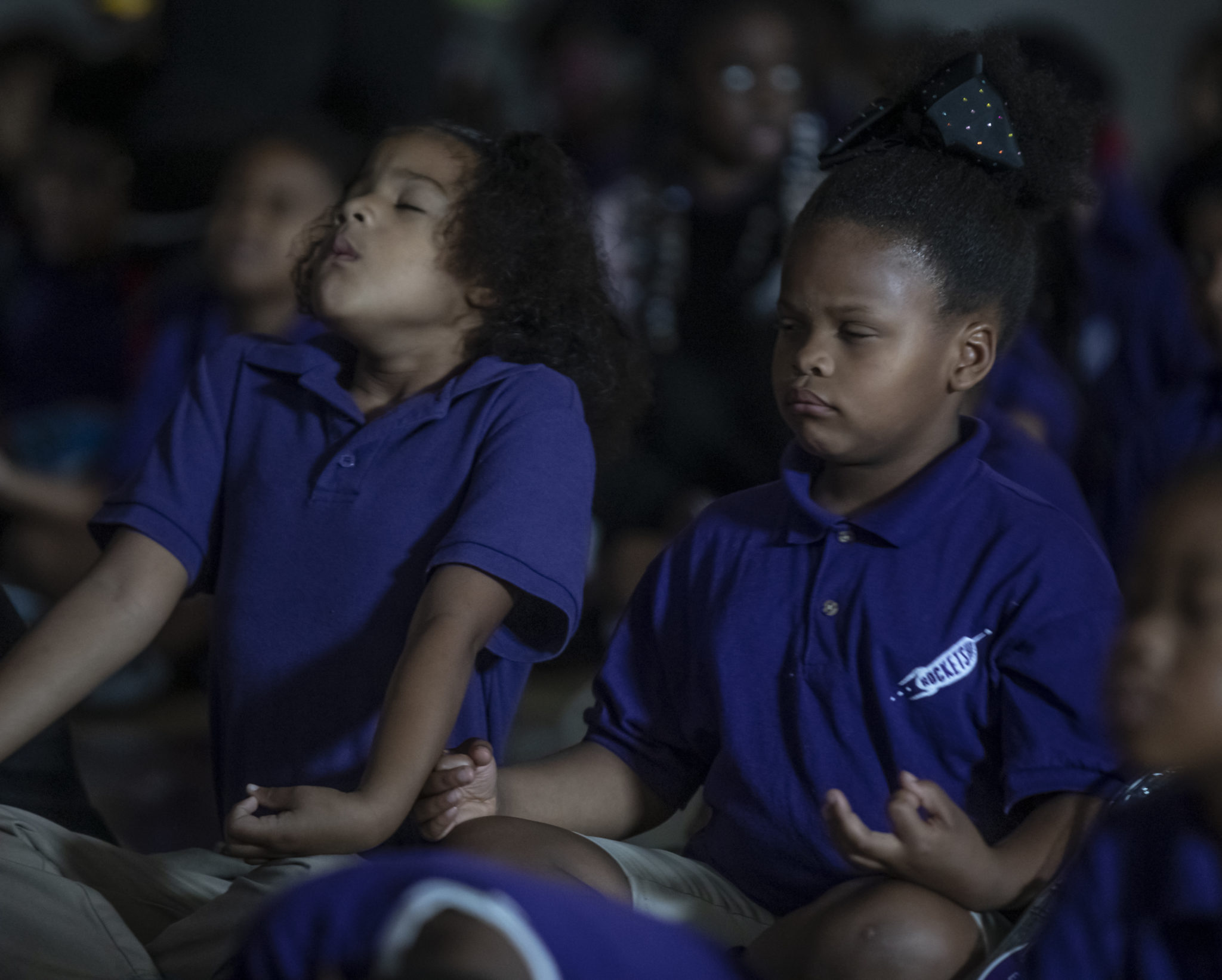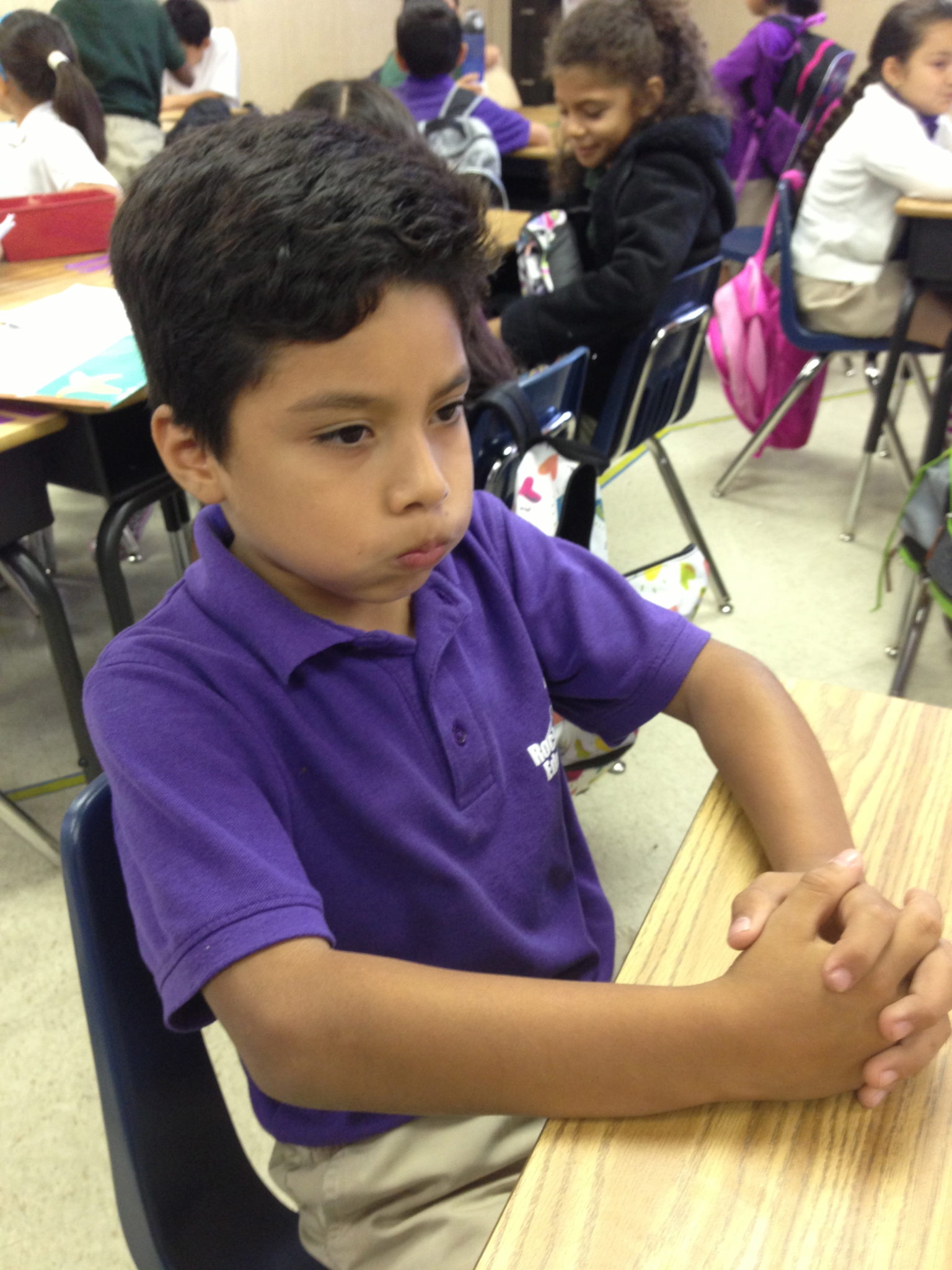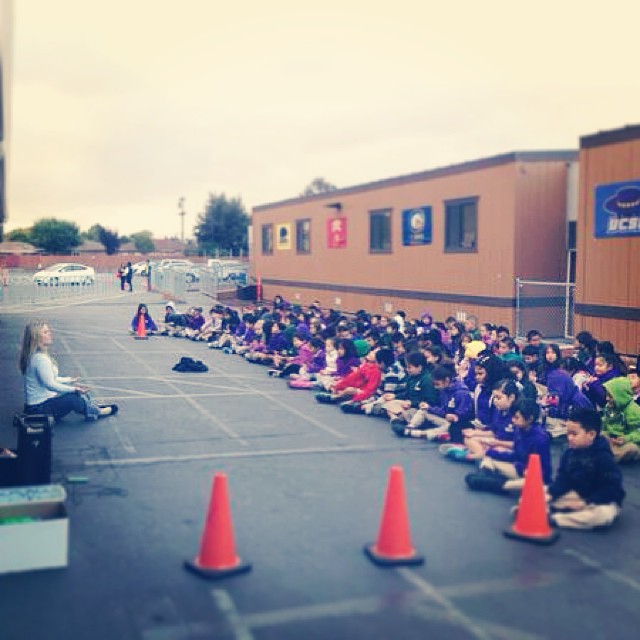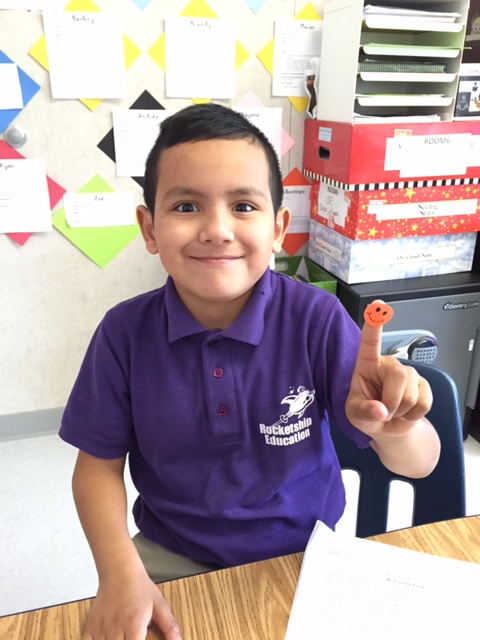
Five Tips to Bring Mindfulness into the Classroom
by Lani Mednick, Co-Author at Kids' Own Wisdom
Tip #1: Mindful Bodies
A mindful body prepares the mind for learning. The following are attributes that indicate a mindful body:
- Empty/Still Hands (on knees, optional)
- Straight Spine
- Shoulders Down/Relaxed
- Eyes Closed (optional)
- Ears Listening
- Calm Breath
- Feet Planted
When teaching this for the first time, have your students in chairs, facing you. Then, ask them to tighten certain parts of their body and then release them. Ask them what each feels like. Talk to them about how moods affect the way we hold our bodies, and the way we hold our body inversely affects our mood. Show them what sad, mad, happy, relaxed bodies look like. Explain that when they are in a mindful body, they will both be better able to learn and will feel more relaxed.
Ask them how sitting with a mindful body makes them feel. Dialogue with peers helps solidify importance and personal connection.
Throughout the day, if students are becoming disruptive or antsy, you can remind them to return to a mindful body with a gentle bell or by simply saying “mindful bodies” in a calm voice. As an educator, you too must be mindful of your tone when using this as a tool.
Tip #2: Mindful Breathing
Our breath is an essential tool in regulating our bodies and our minds. To many mindfulness scholars, mindful breath is the key to success with meditation.
To help your students access their breath, help them to find an “anchor point” – a part of their body where they can feel their breath. Explain that just like an anchor keeps a ship still and steady, their hand on their belly will be an anchor to keep their minds and bodies still and steady.
Once they are in a mindful body, have them place one hand on their belly and close their eyes. Have them first exhale all the air from their lungs. You will notice an enormous difference in the quality of their breath when you ask them first to exhale, rather than inhale. Then, have them inhale fully, into their bellies, taking in all the oxygen they can. At the top of the breath, they should hold the breath for three counts and then release slowly. Repeat three-five times.
You can also experiment with a different anchor point, and have them place a hand about two inches in front of their mouth and nose. Repeat the above breath practice and explain that they can use whichever anchor point works best for them.
As with mindful bodies, ask them how this felt and what they noticed. Ask them if anyone was thinking about anything else besides their breath. Explain that mindfulness is letting all thoughts go, like a “bath for the mind.”
Ask the students when they think they can use mindful breathing in their daily lives, and suggest that they practice when they’re frustrated, sad or if they are having trouble sleeping. Invite the students to use mindful breathing as a tool whenever they wish to calm the body and the mind.
Tip #3: Mindful Listening
As with mindful breathing, mindful listening is a helpful tool we can use in all aspects of our lives.
For this initial lesson, you will need a gentle bell or meditation bowl. Show them the bell and ring it once. They will be excited about the sound, guaranteed.
Tell them that today, you will be focusing on their sense of hearing, and instruct them to get in a mindful body and close their eyes. Explain that when you take one sense away, like sight, other senses are amplified.
Before you ring the bell again, instruct them to listen carefully and only raise their hands when they no longer hear the sound. When they are all closing their eyes, ring the bell and wait until all students raise their hands. Then, ask them what they heard, observed or noticed. Call out a student or two who raised their hand toward the end and congratulate their listening skills.
Before ringing the bell again, ask them to listen even more intently this time. Tell them to wait before raising their hands to make sure the sound is truly gone. After all hands are raised, ask them how that was different than the first time. Ask them to share how that felt.
Then, extend the activity into practicing a “mindful minute.” Explain that they will be doing the same thing, just without the bell. Tell them you will set a timer and they will practice mindful listening, in a mindful body for one minute.
After the minute is up, ask them how that felt, what they heard and experienced. Ask them if they heard their own breath or heartbeat. Explain that it is only when we are quiet and mindful that we hear things like this, and that is very special.
You can start or end classes with a “mindful minute” and increase the time as students feel ready. This is a true and powerful practice in meditation that will revolutionize the focus in your classroom.
Tip #4: “Heartfulness”
Once the students internalize mindful bodies, breath and listening, they will be able to practice “heartfulness.”
This is a practice of sending positive energy and intention to people we love. Have your students get in a mindful body, with their eyes closed, and imagine someone they love who is not in the room. Tell them to imagine this person with a big smile on their faces because they are doing something they really enjoy. Then, have them send positivity in their direction by repeating after you.
Say, “I hope you are happy” —-they repeat
Say, “I hope you are healthy” —they repeat
Say, “I hope you are full of love” —-they repeat
This will, no doubt, make them smile and focus inward. Explain that “heartfulness” is a type of mindfulness because, just like mindful breath and mindful listening, it pushes other thoughts out of the brain and helps us prepare for the day ahead.
Invite them to silently send positivity to their classmates anytime and that this will help build a calm, conscious community.
Tip #5: Self-Awareness
Start each class, especially right after a high-energy time like lunch or recess with mindful breathing, followed by a silent reflection. Explain that this is a time to recognize what is coming up for them, and is a more conscious version of mindful listening. Instead of listening to the sounds around them, they are shifting the focus inward.
Have the students close their eyes and think about their day and how they are feeling. Instruct them to silently scan both their body and mind for areas that feel tight or uncomfortable and encourage them to acknowledge these things and let them go. When we teach our students to be metacognitive, they will be better able to interact with one another peacefully and solve problems that may arise.
Additionally, you can use the anchor chart below to talk to your students about being a self-aware, contributing member of the class/community.
Share how you help cultivate a mindful and peaceful classroom → @RocketshipEd
Lani is a former Rocketship teacher who moved to San Jose from Denver, CO after her second year teaching. She taught 3rd grade math and Kindergarten Literacy at Rocketship Los Suenos, then helped found the Transitional Kindergarten program at Rocketship Spark. Additionally, she has been a director for Rocketship Outdoor School for the past three years. She has since moved to Berkeley where she is currently co-authoring a book about Social-Emotional development of young children, is a homeschool teacher, yoga teacher and tutor. She is excited about working with students 1:1 and giving them her undivided attention.
She earned her B.A. in Philosophy and Communication from the University of Southern California and her M.A. in Curriculum and Instruction at the University of Colorado- Denver. Her other passions include mindful schools, gardening, yoga, the great outdoors, reading and live music.
Published on March 4, 2015
Read more stories about: Teacher Experience.






